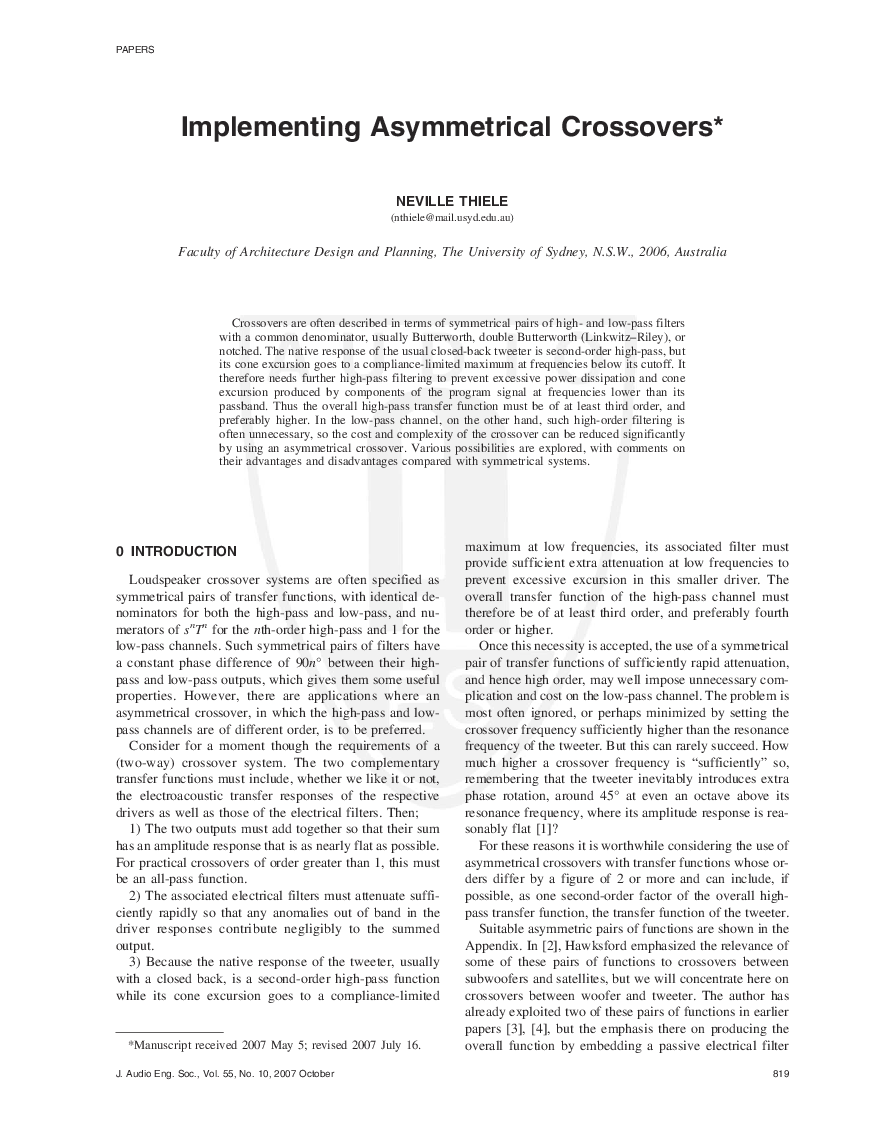Home / Publications / E-library page
You are currently logged in as an
Institutional Subscriber.
If you would like to logout,
please click on the button below.
Home / Publications / E-library page
Only AES members and Institutional Journal Subscribers can download
Crossovers are often described in terms of symmetrical pairs of high- and low-pass filters with a common denominator, usually Butterworth, double Butterworth (Linkwitz-Riley), or notched. The native response of the usual closed-back tweeter is second-order high-pass, but its cone excursion goes to a compliance-limited maximum at frequencies below its cutoff. It therefore needs further high-pass filtering to prevent excessive power dissipation and cone excursion produced by components of the program signal at frequencies lower than its passband. Thus the overall high-pass transfer function must be of at least third order, and preferably higher. In the low-pass channel, on the other hand, such high-order filtering is often unnecessary, so the cost and complexity of the crossover can be reduced significantly by using an asymmetrical crossover. Various possibilities are explored, with comments on their advantages and disadvantages compared with symmetrical systems.
Author (s): Thiele, Neville
Affiliation:
Faculty of Architecture Design and Planning, the University of Sydney, N.S.W., Australia
(See document for exact affiliation information.)
Publication Date:
2007-10-06
Import into BibTeX
Permalink: https://aes2.org/publications/elibrary-page/?id=14172
(933KB)
Click to purchase paper as a non-member or login as an AES member. If your company or school subscribes to the E-Library then switch to the institutional version. If you are not an AES member Join the AES. If you need to check your member status, login to the Member Portal.

Thiele, Neville; 2007; Implementing Asymmetrical Crossovers [PDF]; Faculty of Architecture Design and Planning, the University of Sydney, N.S.W., Australia; Paper ; Available from: https://aes2.org/publications/elibrary-page/?id=14172
Thiele, Neville; Implementing Asymmetrical Crossovers [PDF]; Faculty of Architecture Design and Planning, the University of Sydney, N.S.W., Australia; Paper ; 2007 Available: https://aes2.org/publications/elibrary-page/?id=14172